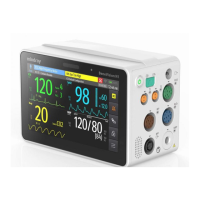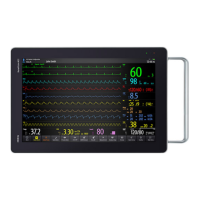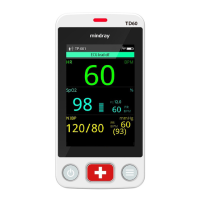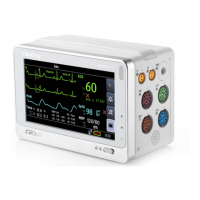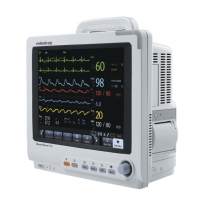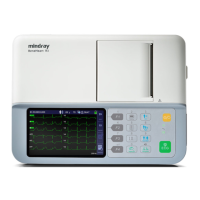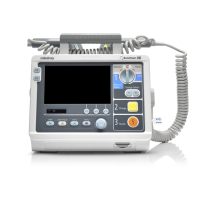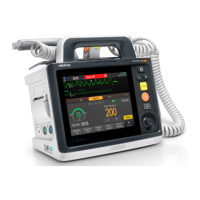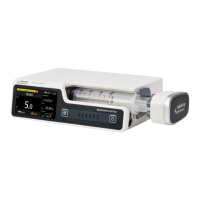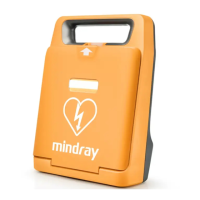14 - 2 BeneVision N Series Patient Monitor Operator’s Manual
• If you need to measure SpO
2
by both the MPM module and the SpO
2
module, select the same type of
SpO
2
. Otherwise, the SpO
2
module will be disabled. For example, if an MPM module configured with
the Nellcor SpO
2
and an SpO
2
module configured with the Mindray SpO
2
are simultaneously
applied, the SpO
2
module will be automatically disabled.
• The SpO
2
extension cable should be compatible with the SpO
2
connectors. For example, you can
only connect the Mindray SpO
2
extension cable to the Mindray SpO
2
connectors.
• A functional tester or SpO
2
simulator can be used to determine the pulse rate accuracy.
• A functional tester or SpO
2
simulator cannot be used to assess the SpO
2
accuracy.
14.2 SpO
2
Safety Information
• When a trend toward patient deoxygenation is indicated, analyze the blood samples with a
laboratory co-oximeter to completely understand the patient’s condition.
• Do not use SpO
2
sensors during magnetic resonance imaging (MRI). Induced current could
potentially causes burns. The sensor may affect the MRI image, and the MRI unit may affect the
accuracy of the oximetry measurements.
• Prolonged continuous monitoring may increase the risk of undesirable changes in skin
characteristics, such as irritation, reddening, blistering or burns. Inspect the sensor site every two
hours and move the sensor if the skin quality changes. Change the application site every four hours.
For neonates, or patients with poor peripheral blood circulation or sensitive skin, inspect the sensor
site more frequently.
• If the sensor is too tight because the application site is too large or becomes too large due to edema,
excessive pressure for prolonged periods may result in venous congestion distal from the
application site, leading to interstitial edema and tissue ischemia.
• When patients are undergoing photodynamic therapy they may be sensitive to light sources. Pulse
oximetry may be used only under careful clinical supervision for short time periods to minimize
interference with photodynamic therapy.
• Setting alarm limits to extreme values may cause the alarm system to become ineffective. For
example, high oxygen levels may predispose a premature infant to retrolental fibroplasia. If this is a
consideration, do not set the high alarm limit to 100%, which is equivalent to switching off the
alarm.
• SpO
2
is empirically calibrated in healthy adult volunteers with normal levels of carboxyhemoglobin
(COHb) and methemoglobin (MetHb).
• Change the application site or replace the sensor and/or patient cable when a persistent SpO2 Low
Signal Quality message is displayed on the equipment. These messages may indicate that patient
monitoring time is exhausted on the patient cable or sensor.
• Replace the cable or sensor when a “SpO2 Sensor Off”, “SpO2 No Sensor”, or “SpO2 Low Signal
Quality” message is consistently displayed while monitoring consecutive patients after completing
troubleshooting steps listed in this manual.
• Variation in measurements may be profound and may be affected by sampling technique as well as
the patient's physiological conditions. Any results exhibiting inconsistency with the patient’s clinical
status should be repeated and/or supplemented with additional test data. Blood samples should be
analyzed by laboratory instruments prior to clinical decision making to completely understand the
patient’s condition.
• Use only SpO
2
sensors specified in this manual. Follow the SpO
2
sensor’s instructions for use and
adhere to all warnings and cautions.
